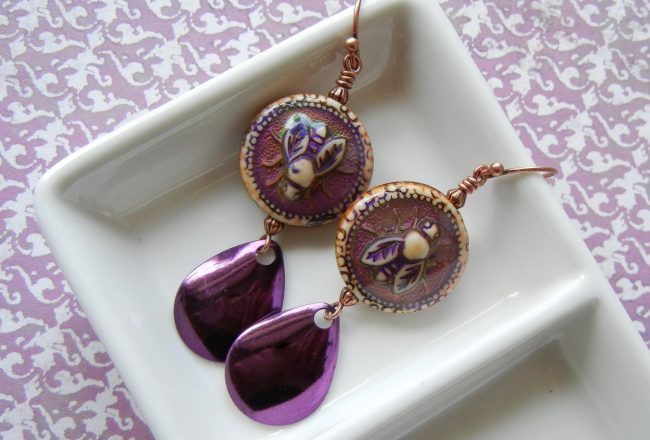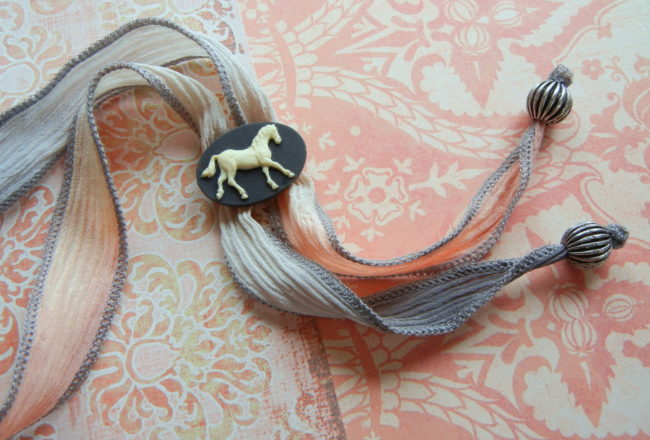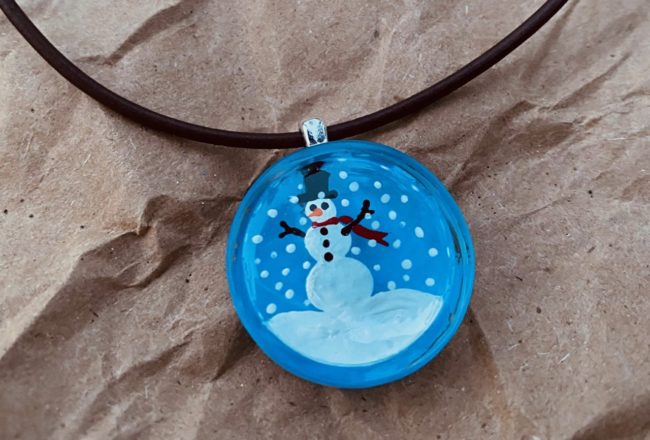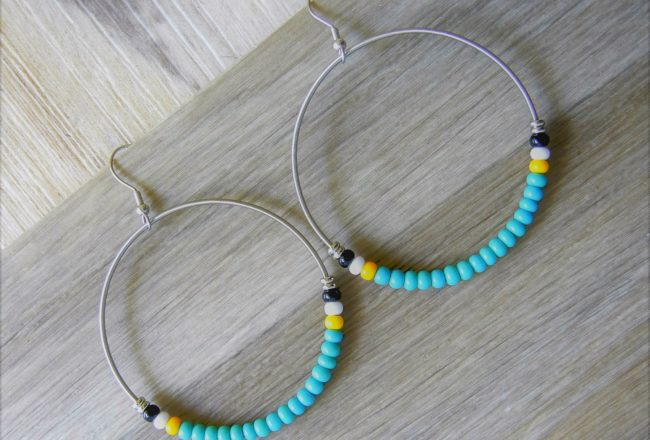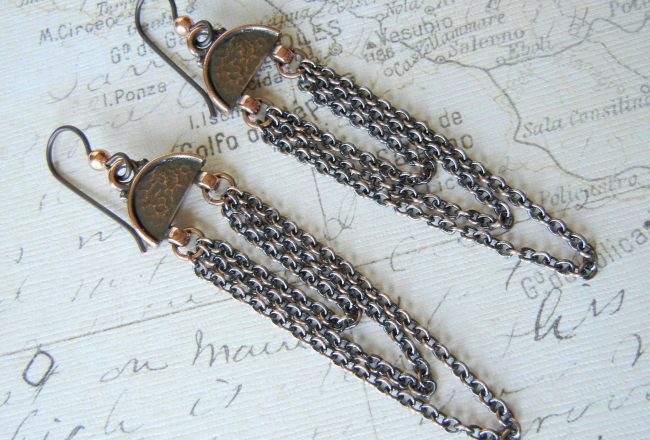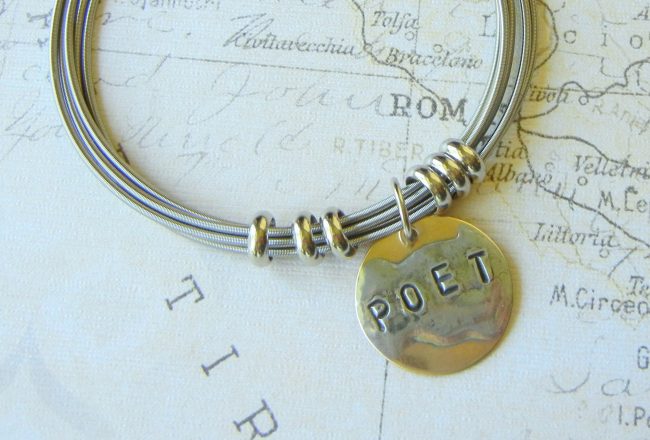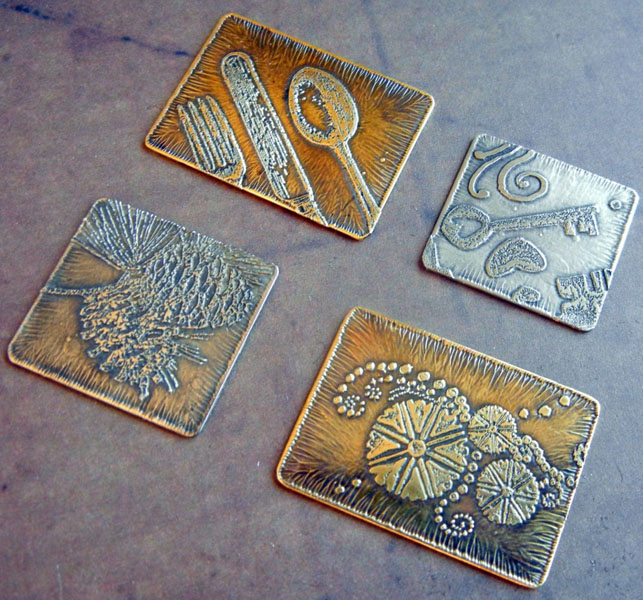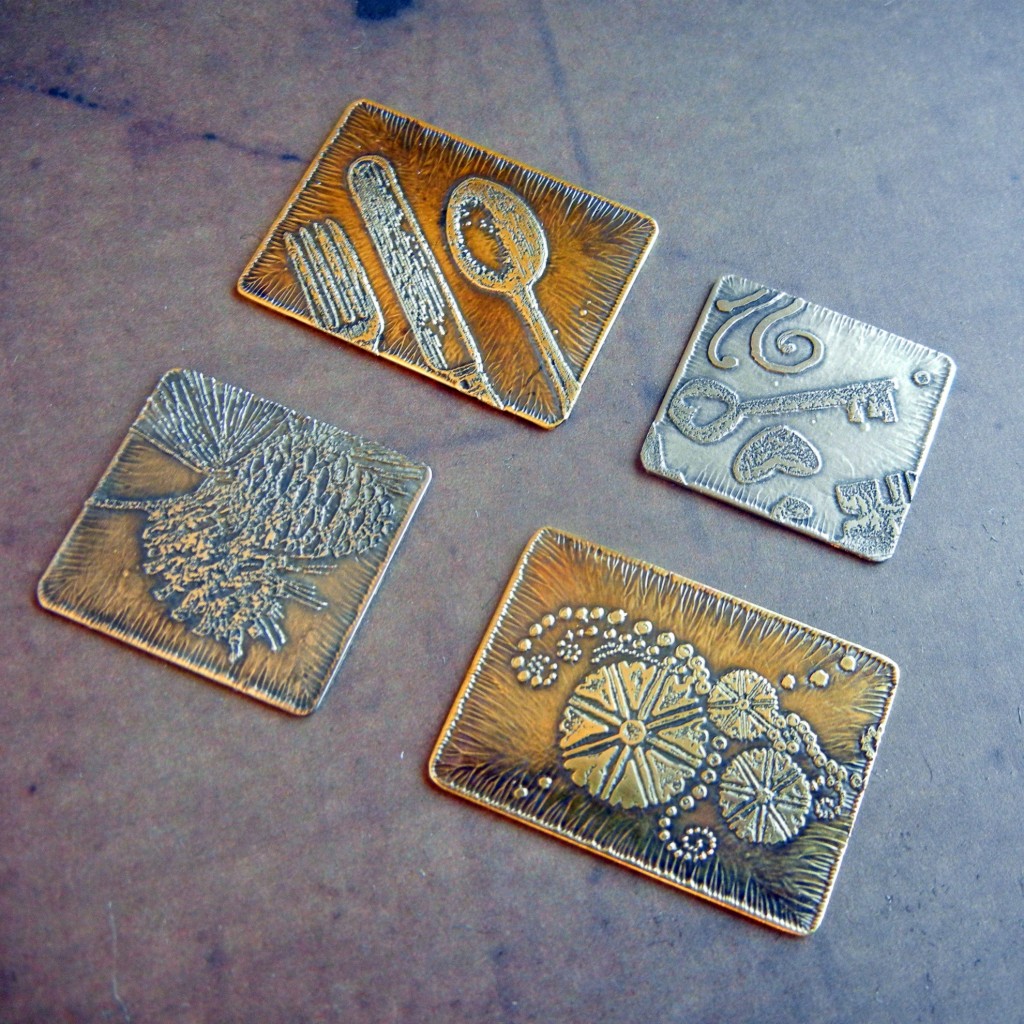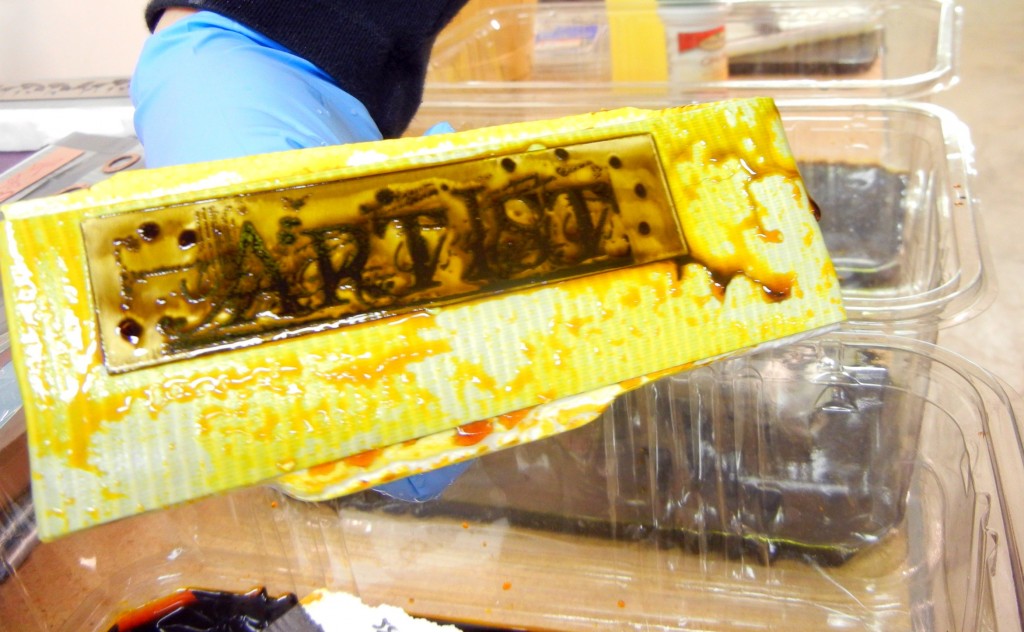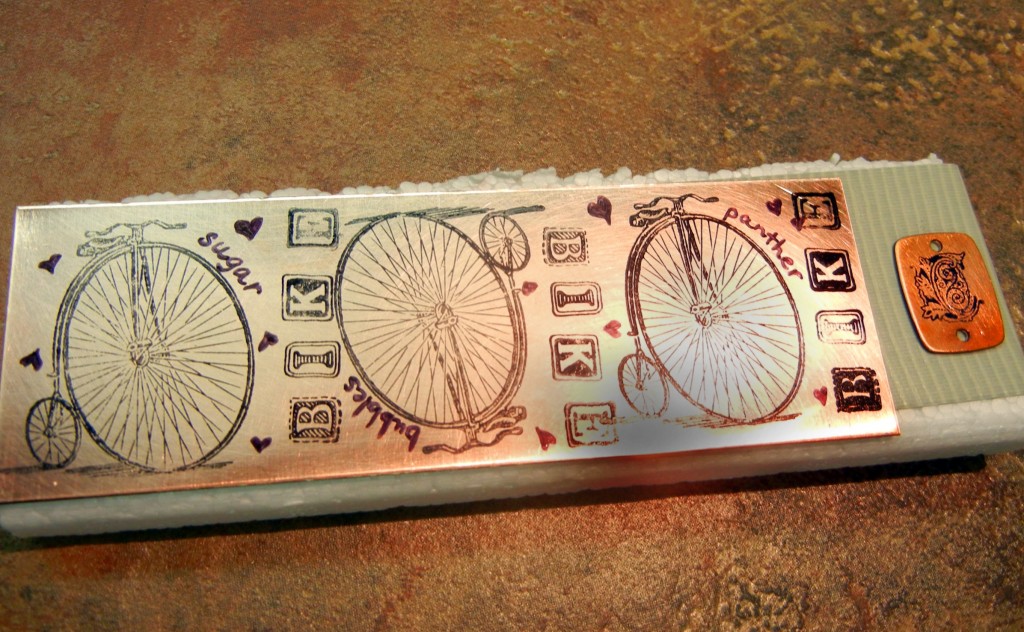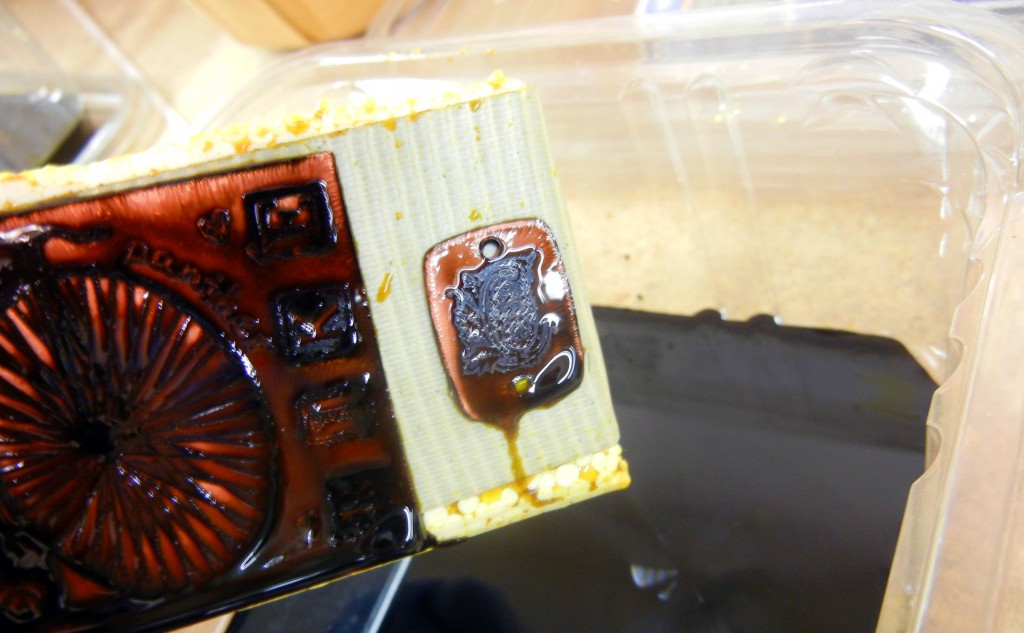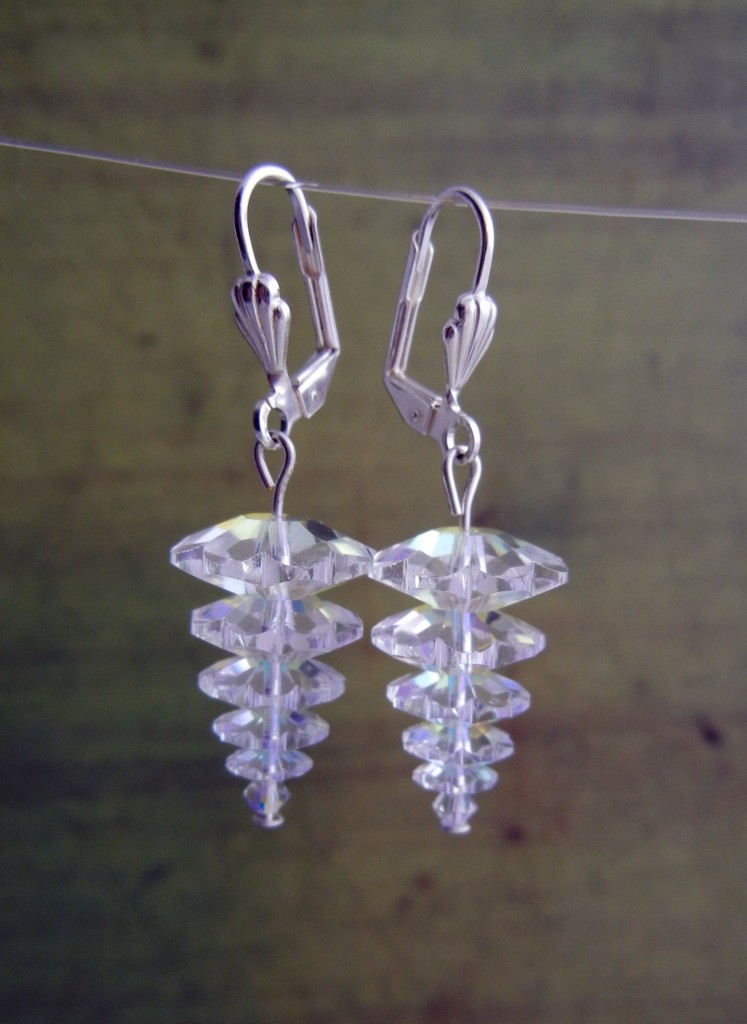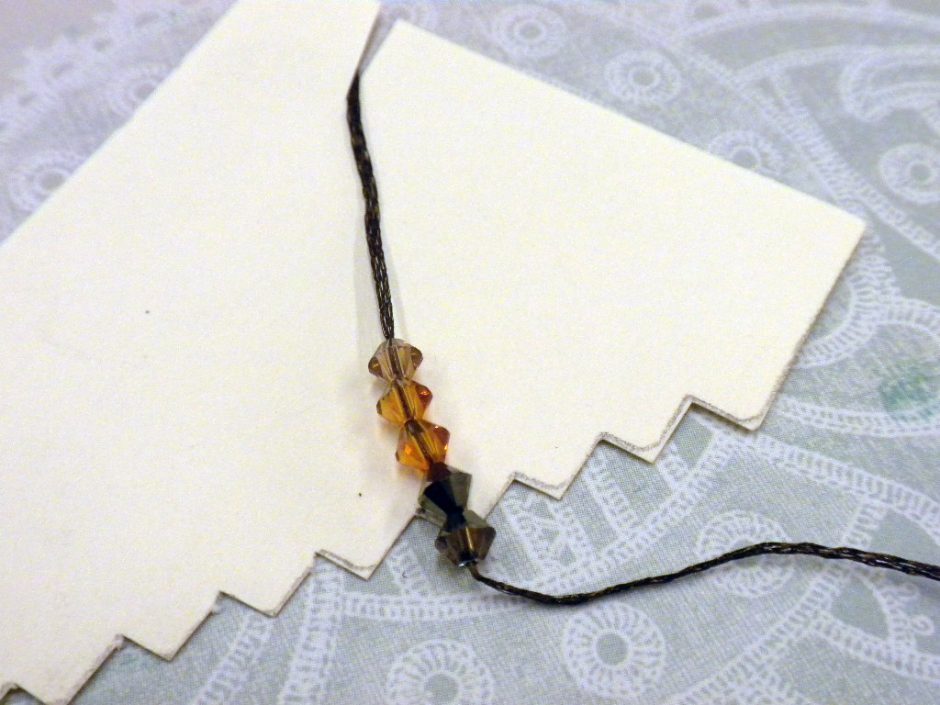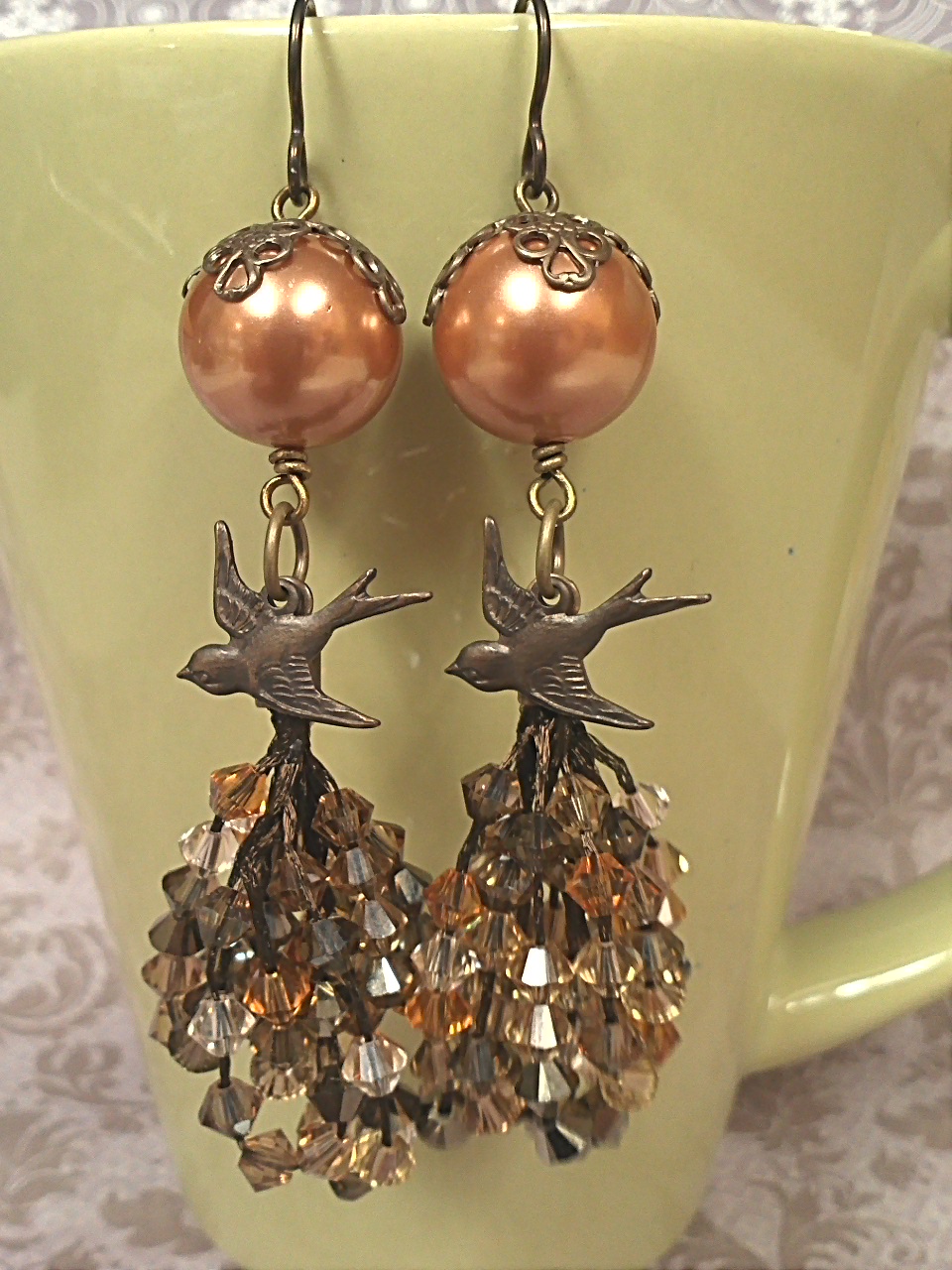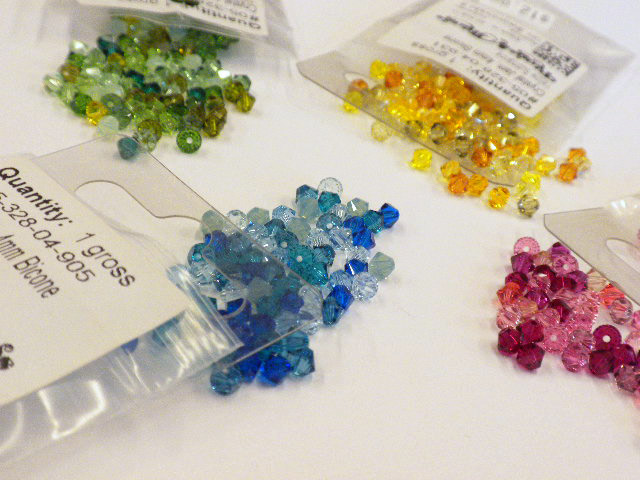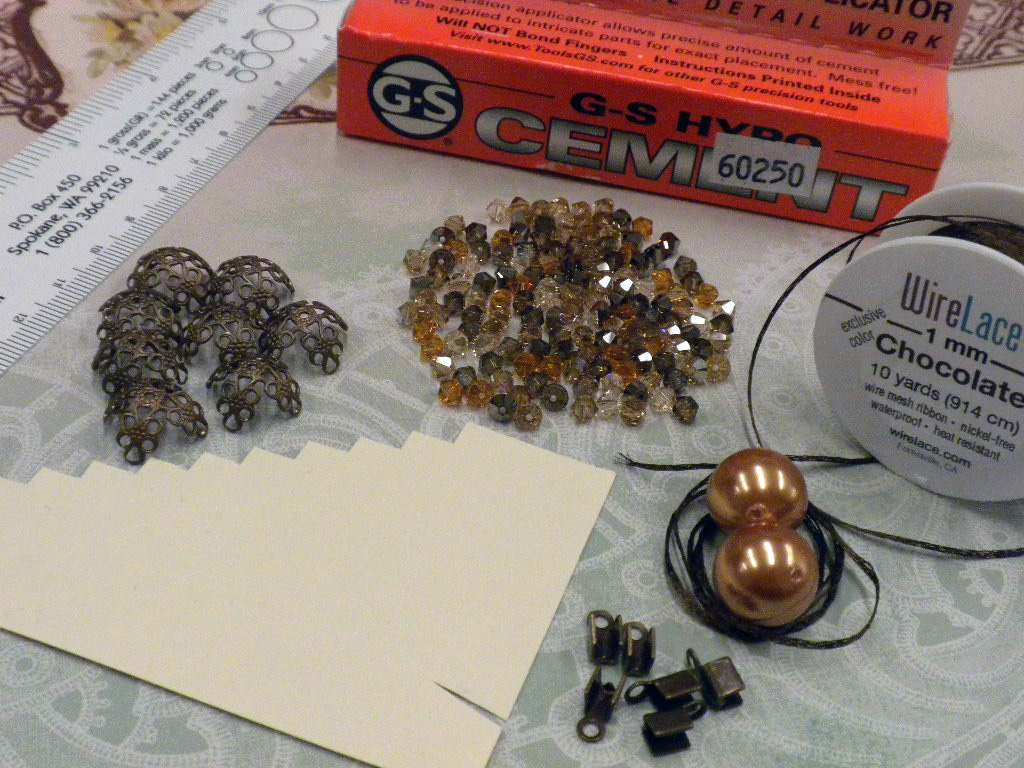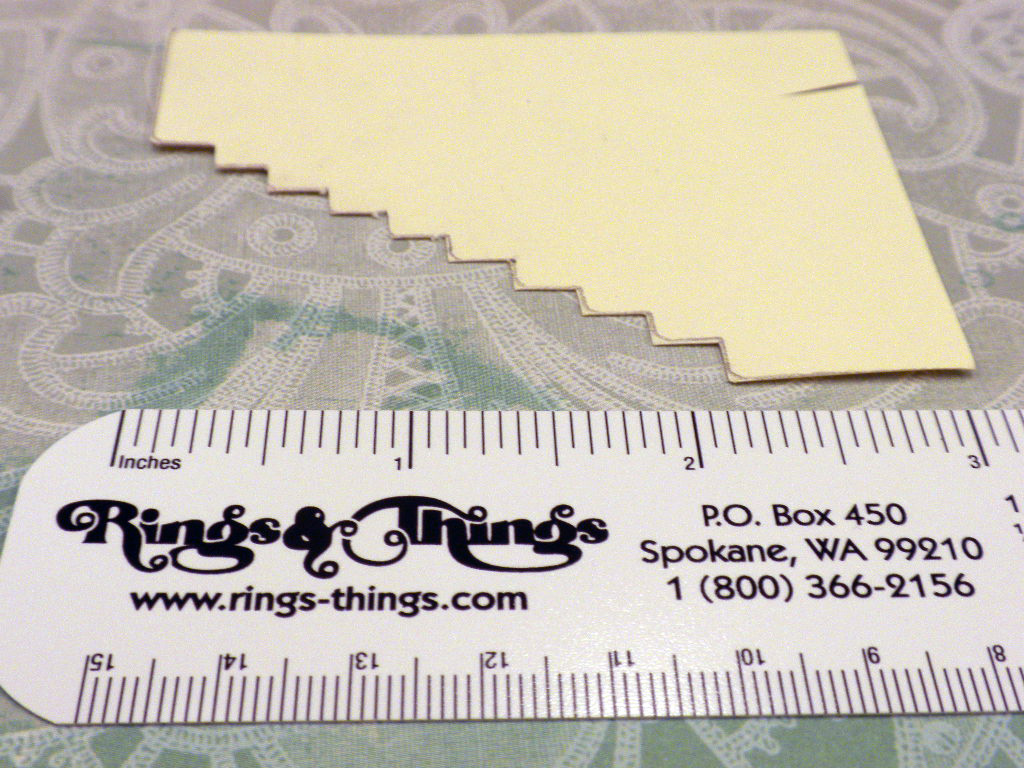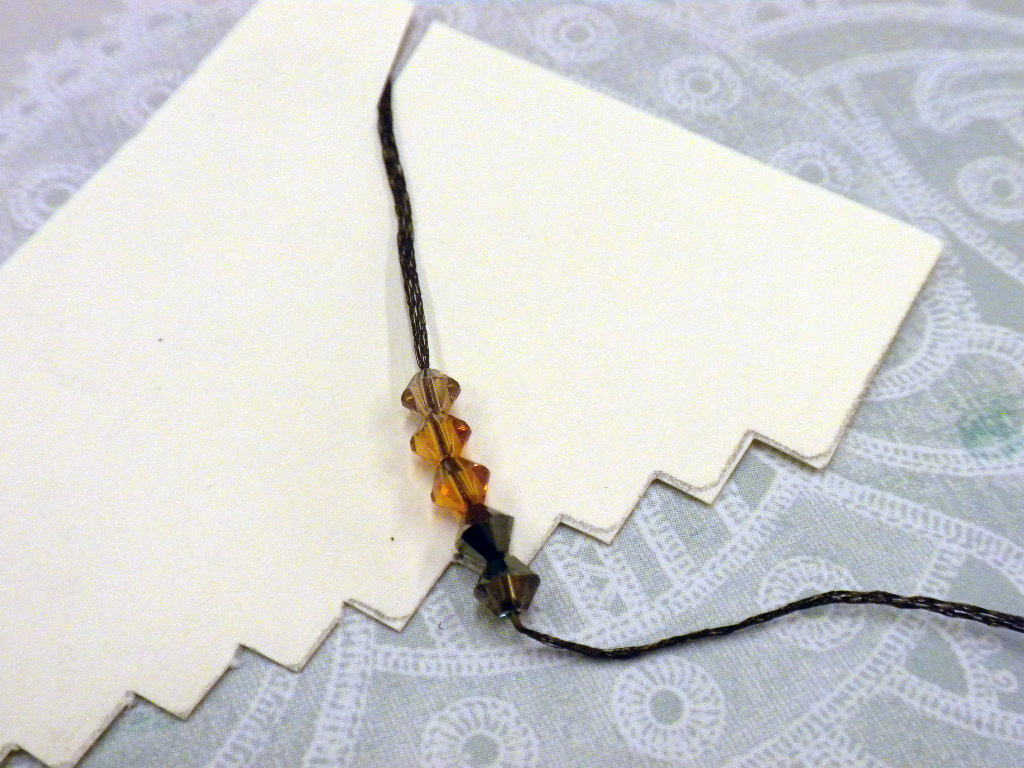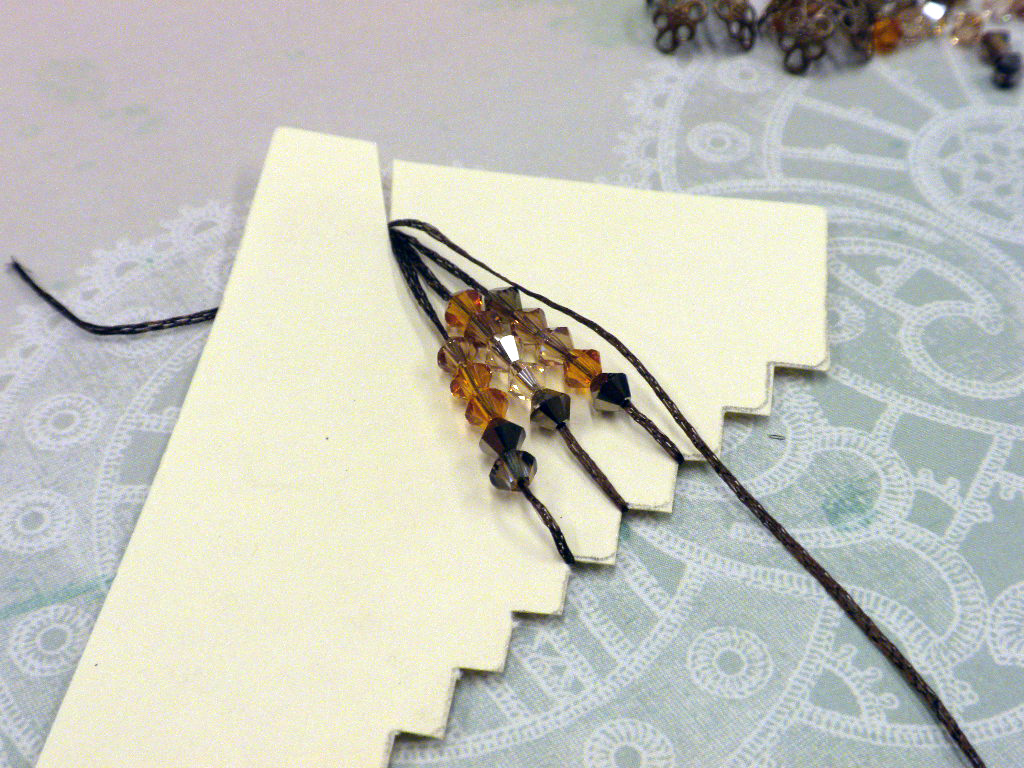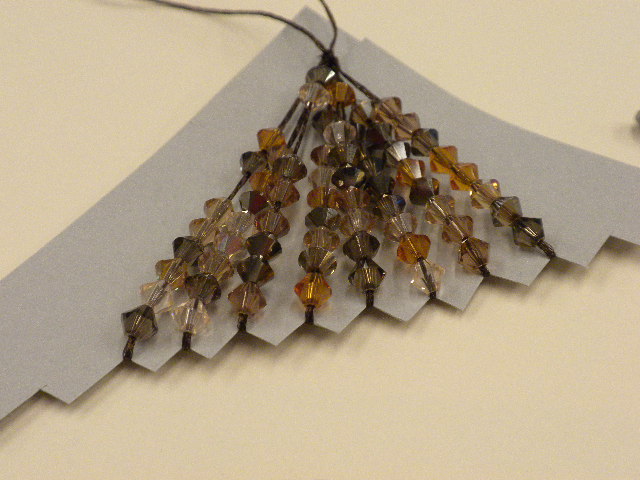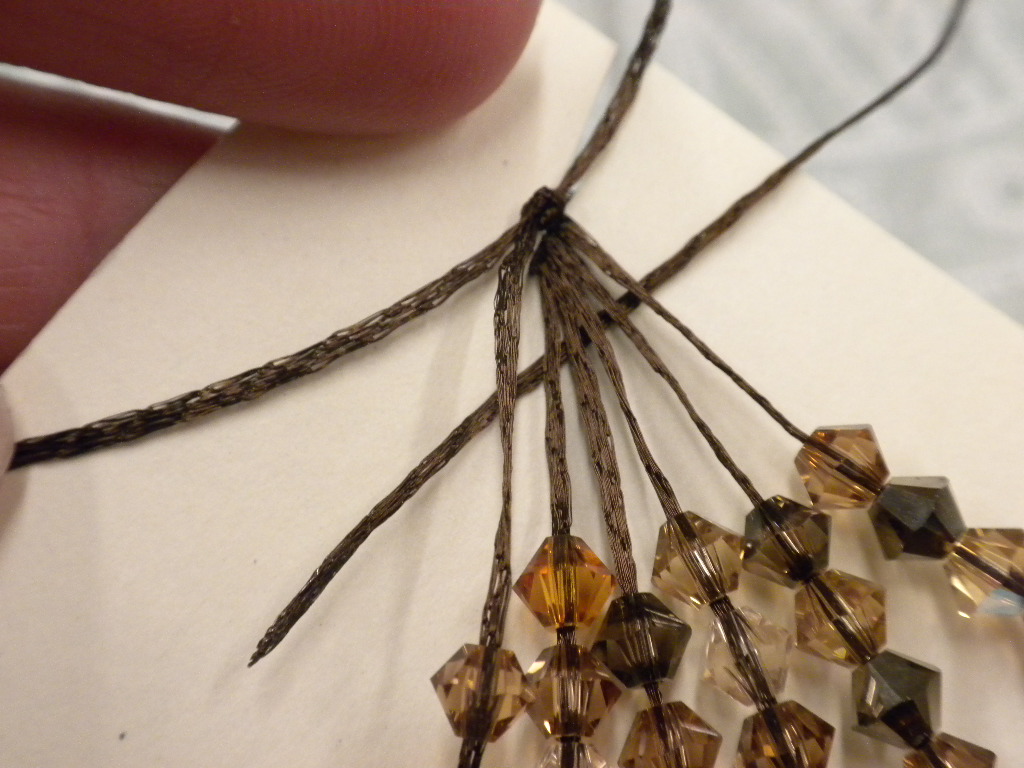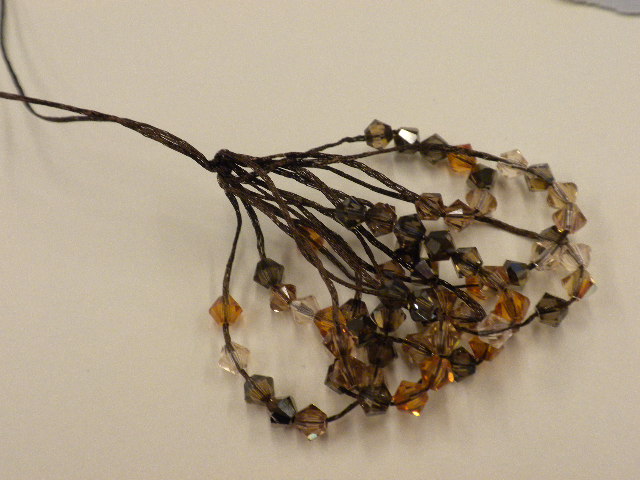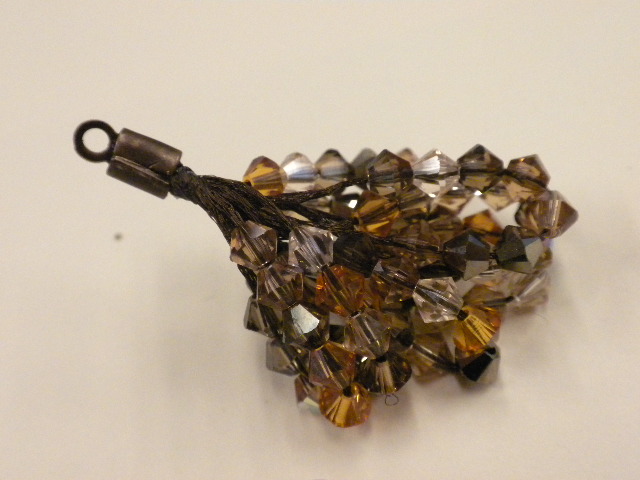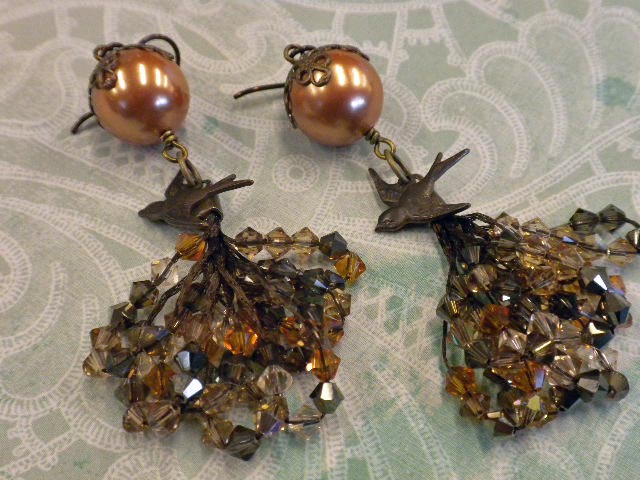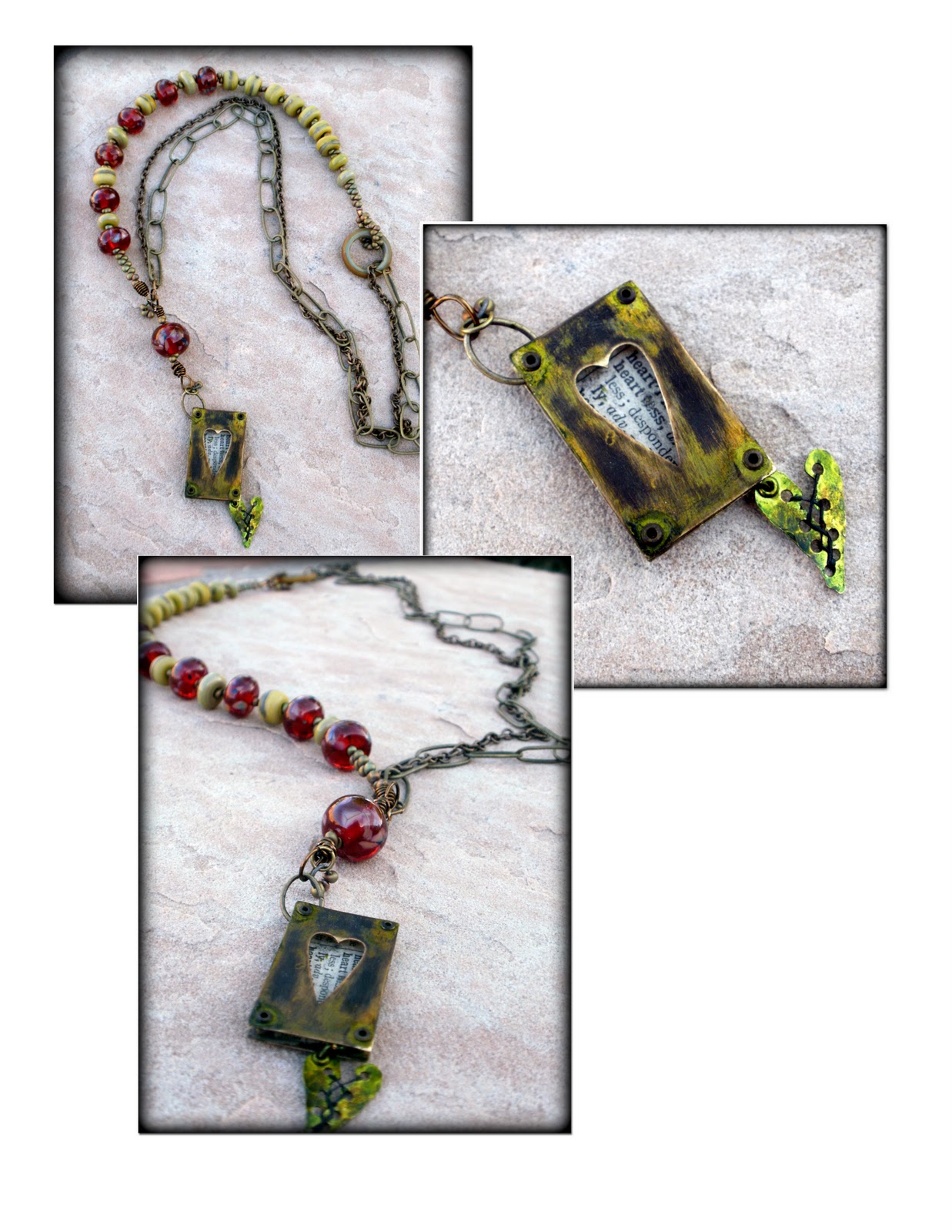[editor’s note: links updated March 2018]
Torch fired enameled metal is really (really!) quite beautiful! You can create your own on copper (or a few other metals) using Thompson vitreous enamels, or purchase artisan copper components from C-Koop Beads. C-Koop components’ colors are deep and lustrous due to the layers of glass fused to the surface of the metal, and since they are handmade, each one is slightly different. Here are a few of the mixed-media jewelry pieces our designers have recently created with enameled copper:
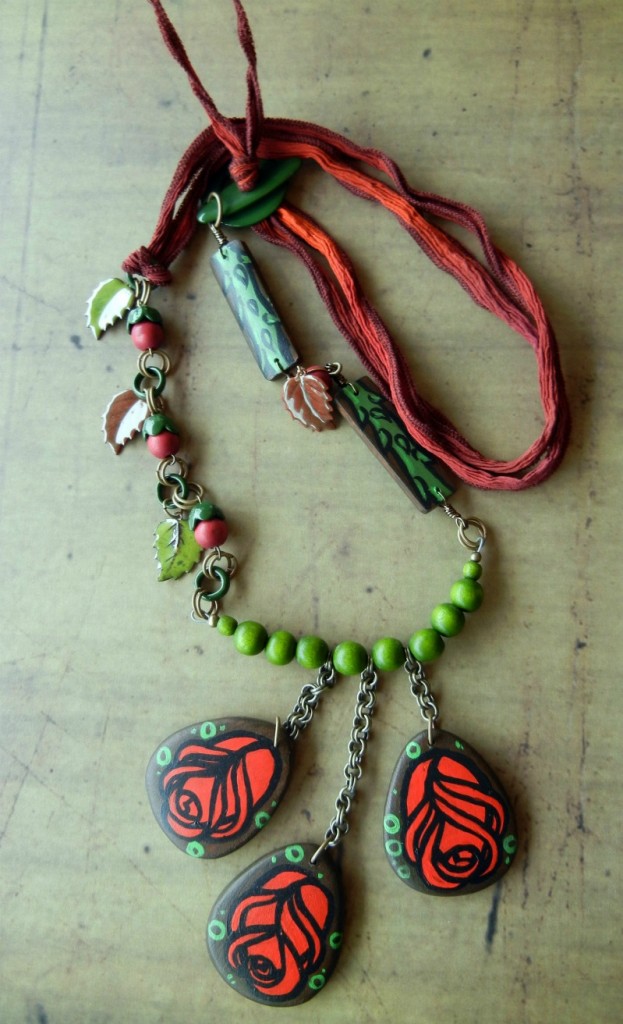
Nory painted wood pendants and beads with a rose motif, and had Tiffany construct his design using silk ribbon and brightly dyed wood beads. The enameled copper leaves, rings, bead caps and toggle clasp are all by C-Koop.
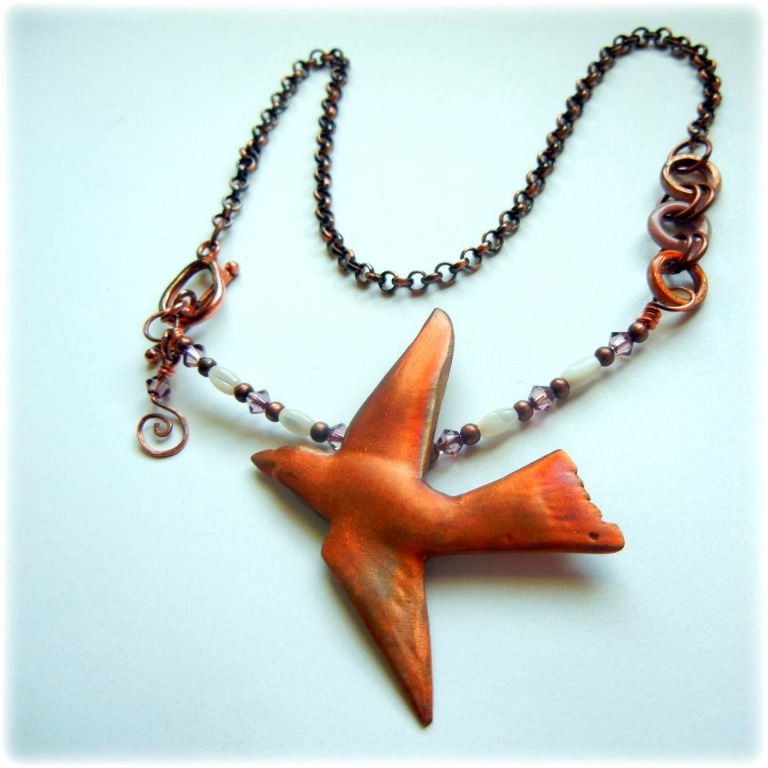
I used copper clay powder to create the bird pendant, which coordinated well with C-Koop enameled pink rings and Swarovski antique pink crystals. I love how you can see bits of copper underneath the enamel.
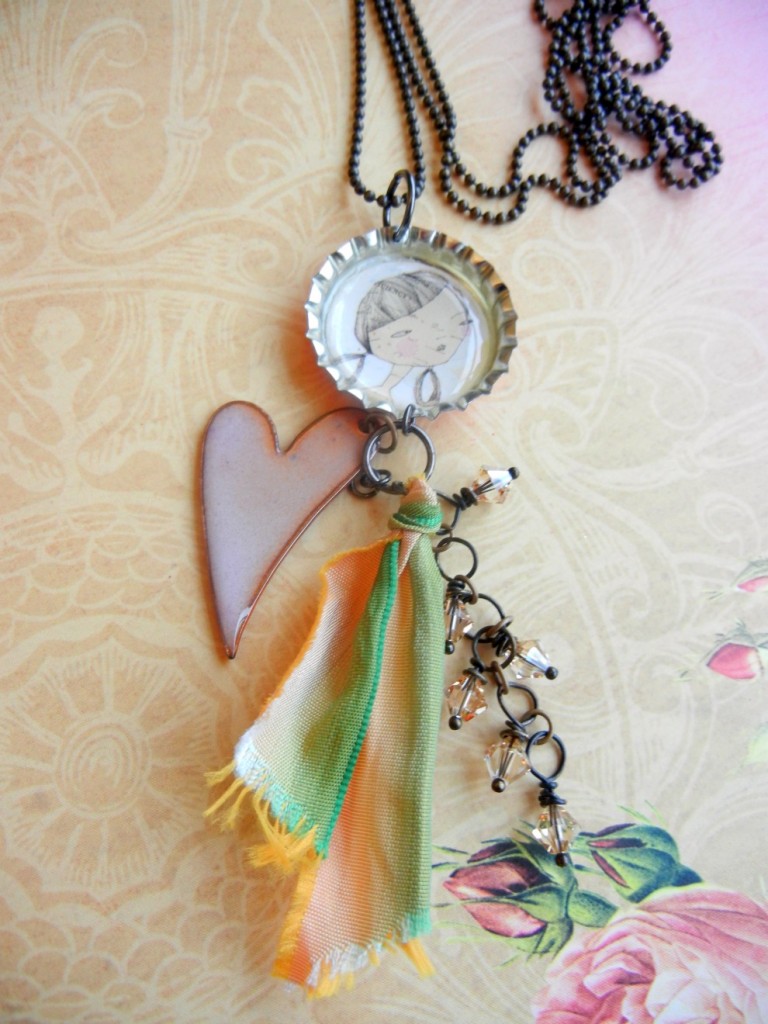
The elongated heart shape is practically Sondra’s signature, so of course it was the finishing touch on her bottle cap necklace.
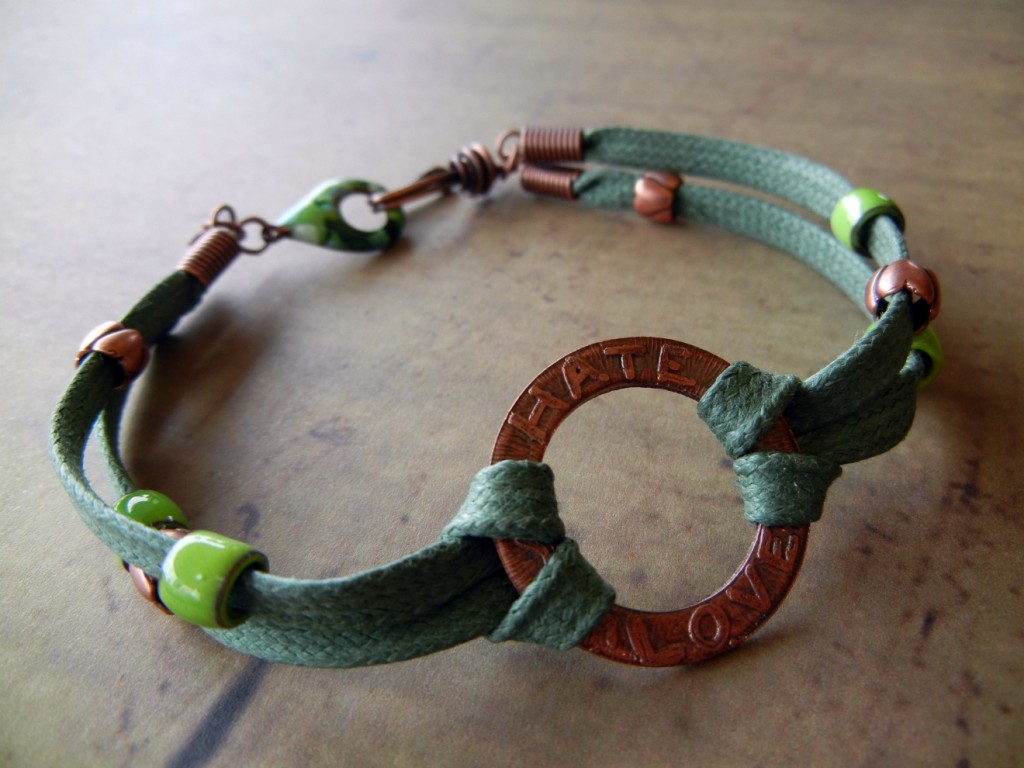
Rita etched a copper washer to create the center link on this bracelet, and used a clasp and beads from C-Koop to add more color.
~Cindy

